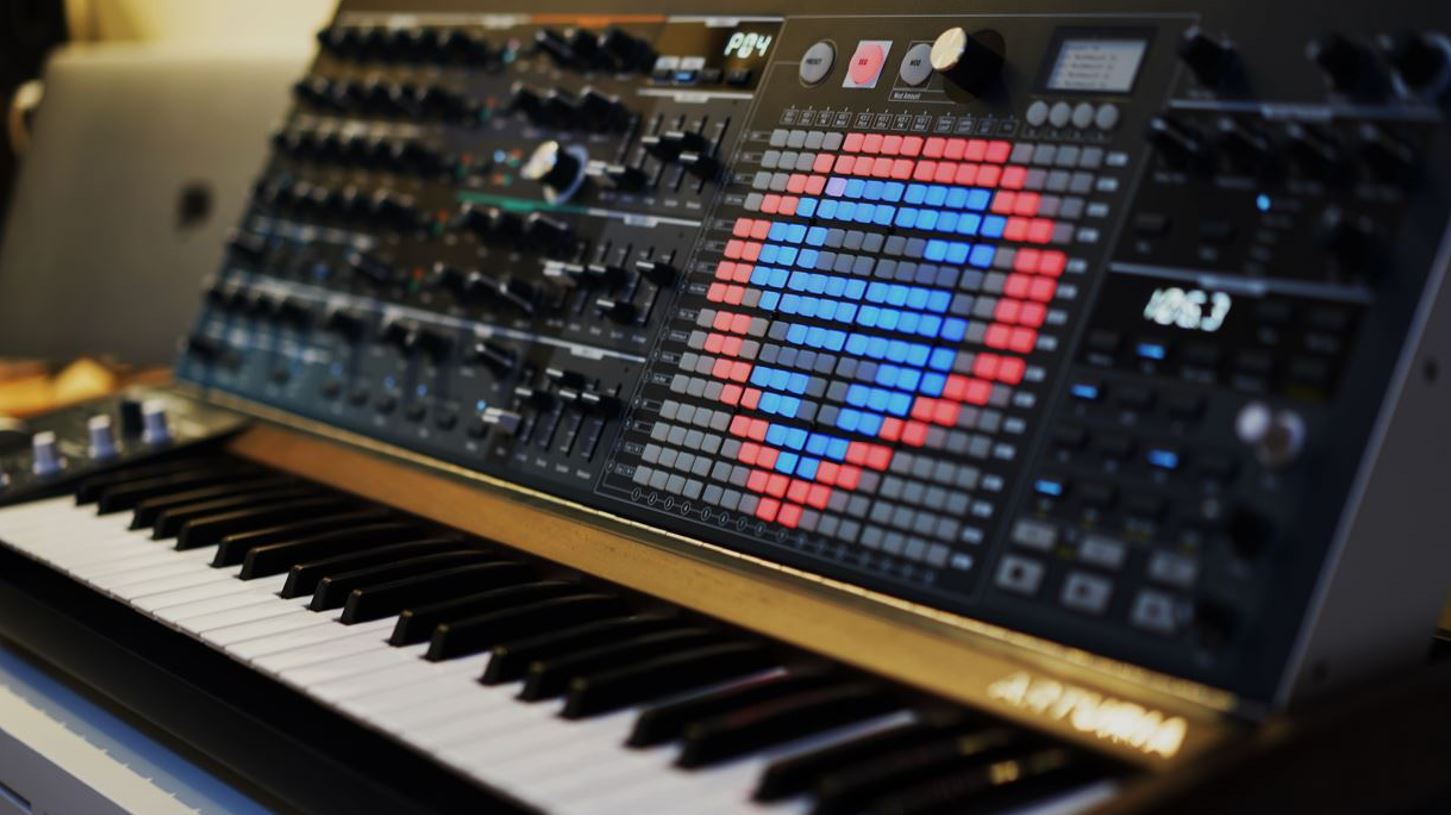The MatrixBrute by Arturia is a massive synth with a hefty price tag – is it worth it? Well, that depends on what you want or need… but as far as synths go, this is one of the most advanced analog synths ever made – certainly in terms of what’s possible with just three oscillators.
In this video I explore what makes it special – what I call its “superpowers” – things you don’t see in lower-end synths, and some things you just can’t get anywhere else:
1. Duo-split: typically, three oscillator synths are monophonic, however the MatrixBrute’s duo-split mode effectively turns it into a 2 voice polyphonic, multi-timbral synth. Each of MatrixBrutes 5 audio sources can be routed through separate VCAs and filters, letting you sculpt and play two completely different sounds – separately.
2. Paraphonic: MatrixBrute’s paraphonic mode stands out as well. Here, each if its three oscillators gets its own VCA and can be played with its own loudness contour. They do share the same filter envelope, so technically it’s not fully polyphonic, but essentially Paraphonic mode lets you play rich polyphonic tunes. A very interesting effect can be had by assigning different sounds to each oscillator, making for a very unique and surprising polyphonic experience.
3. The Mod Matrix: MatrixBrute’s mod matrix is one of its most striking features, and it’s the best mod matrix design I’ve ever seen, because it helps lay out and simply even the most complex patches. Typically, on other synths, it’s very hard to understand what’s going on when multiple modulations are applied. Many other synth mod matrices are hidden in menus or implemented with patch cables – and understanding a patch (or recreating what you did way back then…) is a daunting task. On the MatrixBrute, each point on its 16×16 grid represents a potential patch point, easily re-traceable and clearly labelled. In the video I show how even a complex patch with over 20 different modulation patch points can be understood and modified extremely quickly. Another impressive feat Arturia pulled off are the four configurable modulation destinations which can be assigned to practically all the knobs and sliders on the panel.
4. The Macro knobs on the MatrixBrute are wonderful performance tools. Technically, they are modulation sources on the mod matrix, that can be configured to affect any one of the modulation destinations. The beauty of these macro knobs is that you can use them to condense the sonic variations that are the essence of what makes your patch special – into four easily accessible controls.
5. Dual filters: MatrixBrute’s two filters – Steiner and Ladder are a big part of its magic and tone. The subtractive filter is a key element in synthesis and having two of them, each with their own character is yet another sonic superpower of the MatrixBrute. Both filters are multimode and have their own drive, feedback (“brute factor”) and level controls. The filters can be routed serially, where one feeds into the other, or set up in parallel. In the parallel routing setup, all five audio sources (three oscillators, the noise generator and the external audio input) can be routed to any of the filters or both of them, opening a broad range of timbral possibilities.
6. Presets: A simple and yet often unavailable feature in analog synths – the ability to save and later recall every single knob position, matrix modulation and sequence. MatrixBrute has 256 preset slots and the companion software makes arranging, replacing and backing them up very easy.
7. The amount of “knob per function” easily accessible features in the MatrixBrute is overwhelming. It almost seems like if a feature is conceivable, Arturia not only threw it in, but also dedicated a control for it. Anything from four different noise types to multiple cross modulation options are all a knob twist or button click away. The beauty if the way Arturia designed the MatrixBrute is that despite it relatively large number of features, its layout and dedicated functions makes it quite easy to learn.
8. Connectivity: Arturia catered to both the MIDI and CV crowds with extensive back panel connectivity. USB and DIN MIDI lets you transmit and received all synth parameters, which makes recording and playing back automations very easy. On the CV side, multiple expression, gate and sync options are available, with the highlight being a 24 jack patch bay extending the 12 modulation destinations on the mod matrix both in and out.
9. BBD Analog Effects: The analog Bucket Brigade Delay-based effects section of the MatrixBrute substantially extends its range with 5 BBD based effects: Sterero delay, Mono delay, Chorus, Flange and Reverberation. All are demonstrated in the video.
Conclusion
There are plenty of other features on the MatrixBrute like its complex oscillators, cross mods and many more – I didn’t cover those in the video because they can be found in cheaper, smaller synths by Arturia and others. Rather, my goal here was to look for “superpowers” – things that just can’t be had anywhere else.
The MatrixBrute is big, heavy and it’s not cheap. Buying one requires a commitment both in finances and real-estate… In my opinion, the fact that it sounds great, is so powerful, unique, and easy to learn, use and come back to – makes it well worth the effort.
